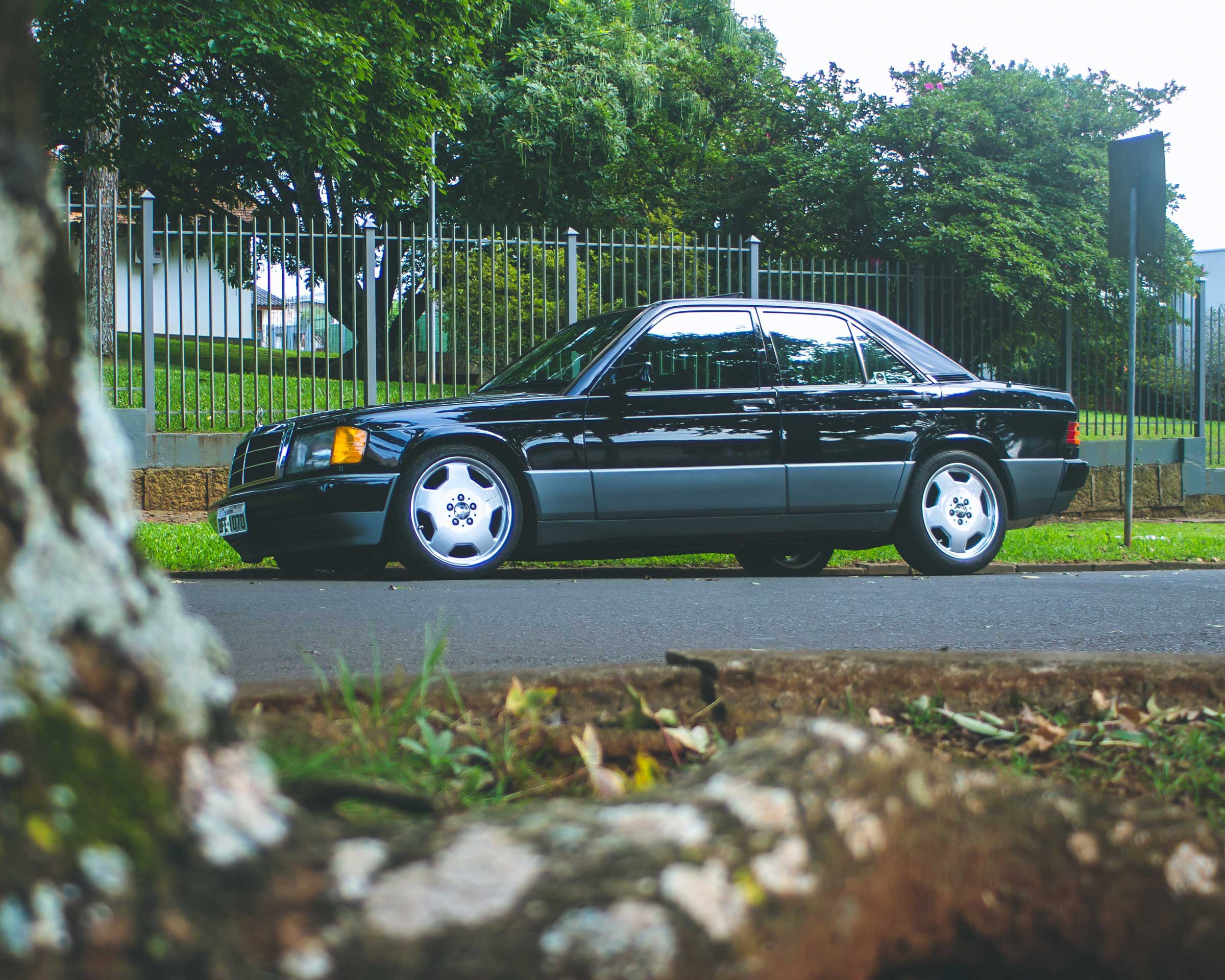
In the realm of automotive history, certain models stand out as true game-changers, leaving an indelible mark on the industry. The Mercedes W201, introduced in 1982, is undeniably one such model. Affectionately known as the “Baby Benz” or the “190E,” this compact executive car made waves for its blend of elegance, engineering prowess, and spirited performance. In this article, we delve into the captivating story of the Mercedes W201 and its enduring legacy.
Bruno Sacco’s Triumph of Design
The Mercedes W201’s design is a testament to the brand’s commitment to timeless aesthetics. Designed by the infamous Bruno Sacco, some would consider his legacy to be the epitome of Mercedes-Benz. The elegant yet understated lines of the W201 are a nod to the brand’s heritage, while also embracing modernity. The compact sedan exudes an aura of sophistication, with its clean-cut proportions, refined grille, and distinct quad-headlamp setup. While many cars of its era opted for flamboyant designs, the W201’s restraint spoke volumes about its understated luxury.
The W201’s Innovative Engineering
Beyond its striking exterior, the W201 boasted a range of engineering innovations that set it apart from its contemporaries. The most notable of these was its pioneering use of galvanized steel, which significantly improved rust resistance—a common concern in the automotive industry. This innovation showcased Mercedes’ dedication to building cars that would stand the test of time. The W201 truly has, as examples of the 190E or 190D are still attractive vehicles on the road today.
Under the hood, the W201 was available with a range of engines, including four-cylinder gasoline and diesel options. The engineering brilliance extended to the suspension and handling as well. The W201 featured a sophisticated multi-link rear suspension, delivering a balance between comfort and sportiness that was virtually unparalleled in its segment.
Performance Prowess
While the W201 was often associated with refinement and luxury, it also had a hidden wild side. The 190E 2.3-16 variant, introduced in 1984, proved that Mercedes was willing to embrace performance without compromising its core values. Developed in collaboration with Cosworth, this high-performance model was powered by a 2.3-liter four-cylinder engine, equipped with four valves per cylinder—a rarity at the time.
The 190E 2.3-16’s performance credentials were solidified on the racetrack. It became a dominant force in the world of motorsport, participating in the Deutsche Tourenwagen Meisterschaft (DTM) and other racing series. The 190E’s victories on the track showcased Mercedes’ ability to infuse its luxury sedans with a thrilling dose of speed and agility.
Cultivating a Legacy
The Mercedes W201 wasn’t just a car; it was a statement of Mercedes-Benz’s commitment to excellence across every facet of automotive design and engineering. Its enduring legacy is a testament to its impact on the industry and its enduring appeal among enthusiasts.
Collector’s Dream: As time passes, the W201 has become a sought-after classic for collectors and enthusiasts. Its timeless design, coupled with its robust build quality, has ensured that well-maintained examples remain in demand. Collectors prize the 190E 2.3-16 for its motorsport pedigree and its role in shaping the performance-oriented direction of Mercedes-Benz.
Influence on Future Models: The W201 played a pivotal role in shaping the design language and engineering philosophy of future Mercedes-Benz models. Elements of its design, such as its clean lines and iconic grille, have carried forward into subsequent generations, maintaining a visual link to the past while embracing modernity.
Driving Pleasure and Practicality: The W201 managed to strike a balance between driving pleasure and everyday practicality, a trait that has resonated with a wide range of drivers. Whether navigating city streets or embarking on a cross-country journey, the W201 offered a comfortable and engaging driving experience.
Conclusion
The Mercedes W201 remains a symbol of Mercedes-Benz’s commitment to excellence, innovation, and a passion for crafting exceptional automobiles. Its design, engineering innovations, and performance capabilities have left an indelible mark on the automotive world. As enthusiasts and collectors continue to celebrate its legacy, the “Baby Benz” will forever hold a special place in the hearts of those who recognize its enduring elegance and performance prowess.
Do you own one of the Mercedes W201 models or would you like to? Let us know your thoughts in the comments below!

